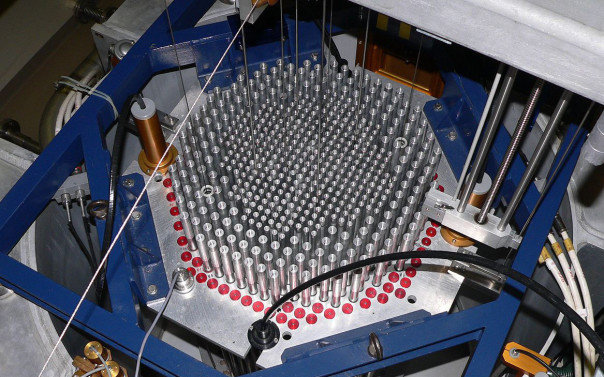The term “fail-safe” is often-used to refer to an object or a device, but it more properly refers to a condition. In this post I hope to explain what “fail-safe” actually actually means, with reference to how nuclear power station stay safe.
To “fail safe” means that in the event of a failure, the failure causes the device to fail in such a way that the device is rendered safe. In terms of deaths per gigawatt year nuclear power comes second only to hydroelectric power in terms of safety (Source: ExternE Externalities of Energy Project, European Commission). This is due to the incredible emphasis that is put on safety in nuclear power stations, and is a testament to nuclear power stations’ defence in depth concept.
Control Rods
One of the key parts of a nuclear reactor is the control rod assembly. When fission occurs in a fuel rod, neutrons are released and these neutrons go on to cause further fissions. The purpose of control rods is to “soak up” excess neutrons and prevent further fissions. Control rods are made of materials such as boron, cadmium and hafnium that have a large capture cross section, meaning that they have a high probability of capturing and absorbing neutrons.

The control rod assembly for the CROCUS research reactor.
If the control rods are raised out of the reactor the excess neutrons are not absorbed and further fission occurs and the reactor releases more thermal energy. If the control rods are lowered into the reactor the neutrons are absorbed, fission does not occur and the amount of thermal energy released is decreased.
Control rods fail safe by being held up by electromagnets. In the event of a power failure the electromagnets are no longer powered and thus the control rods will fall into the reactor, shutting it down. Whilst we cannot be sure that the power supply to the reactor will not fail, we can be sure that gravity won’t fail. If the control rods weren’t held up by electromagnets then we’d run the risk of a fail dangerous situation, with the control rods raised up out of the reactor and no way for them to be reinserted to shut down the reactor.
Moderator and Coolant
The neutrons released in each fission process are travelling too fast to cause further fissions. (Imagine trying to putt a golf ball – hit it too hard and it will just skip over the hole.) The job of the moderator is to slow these neutrons down so that they are travelling at the correct speed to continue the chain reaction process.
The moderators used in nuclear reactors vary between different designs, but graphite and light- and heavy-water are common.
The job of the coolant in the reactor is to take thermal energy away from the nuclear fuel and transfer it (via a heat exchanger) to a steam generator that then drives a turbine and generates electricity. If coolant leaks from a reactor whilst the nuclear fission process continues this leads to thermal energy not being removed from the fuel, and the fuel heating up to the point at which is gets so hot that it melts – a meltdown.
In some reactors (e.g. PWRs, BWRs, SCWRs) the coolant is the moderator, and the reactor will fail safe in the event of a coolant leak because a coolant leak is a moderator leak and the reactor cannot continue the fission process without a moderator. Other reactor designs, that do not use a combined moderator-coolant, have different safety features in place to cope with a coolant leak.